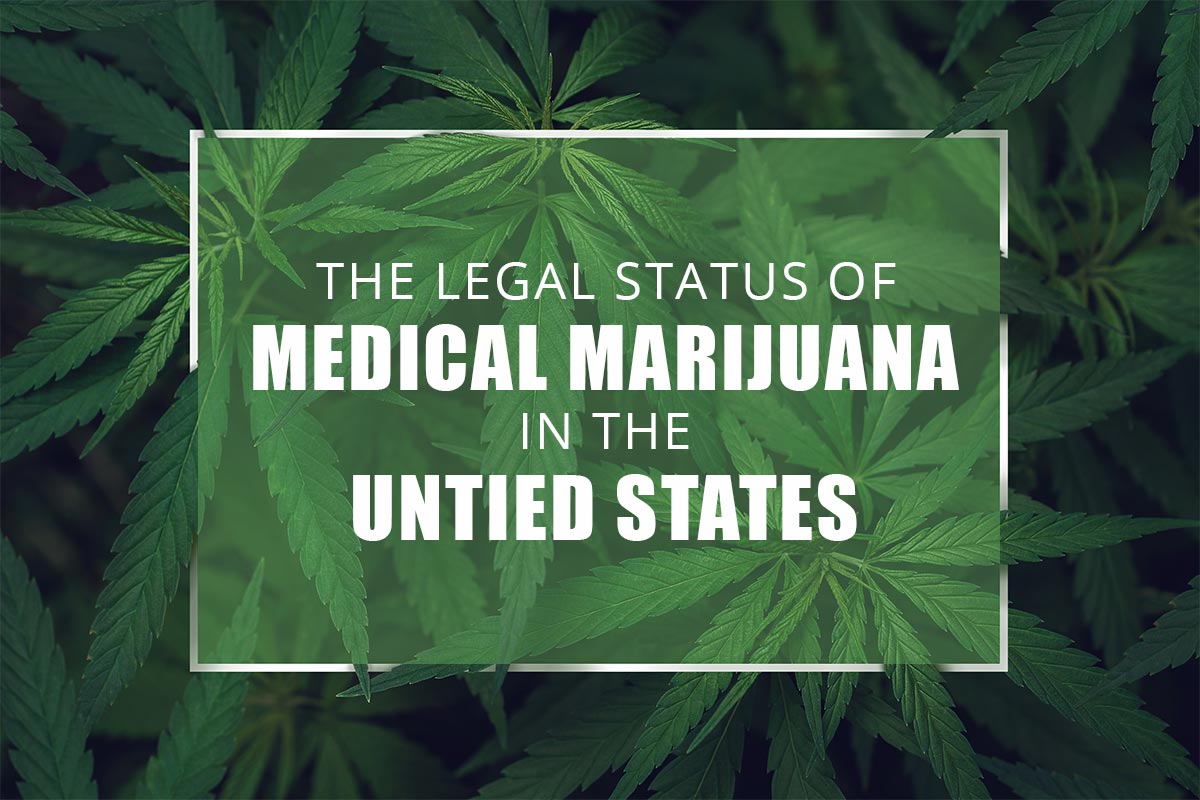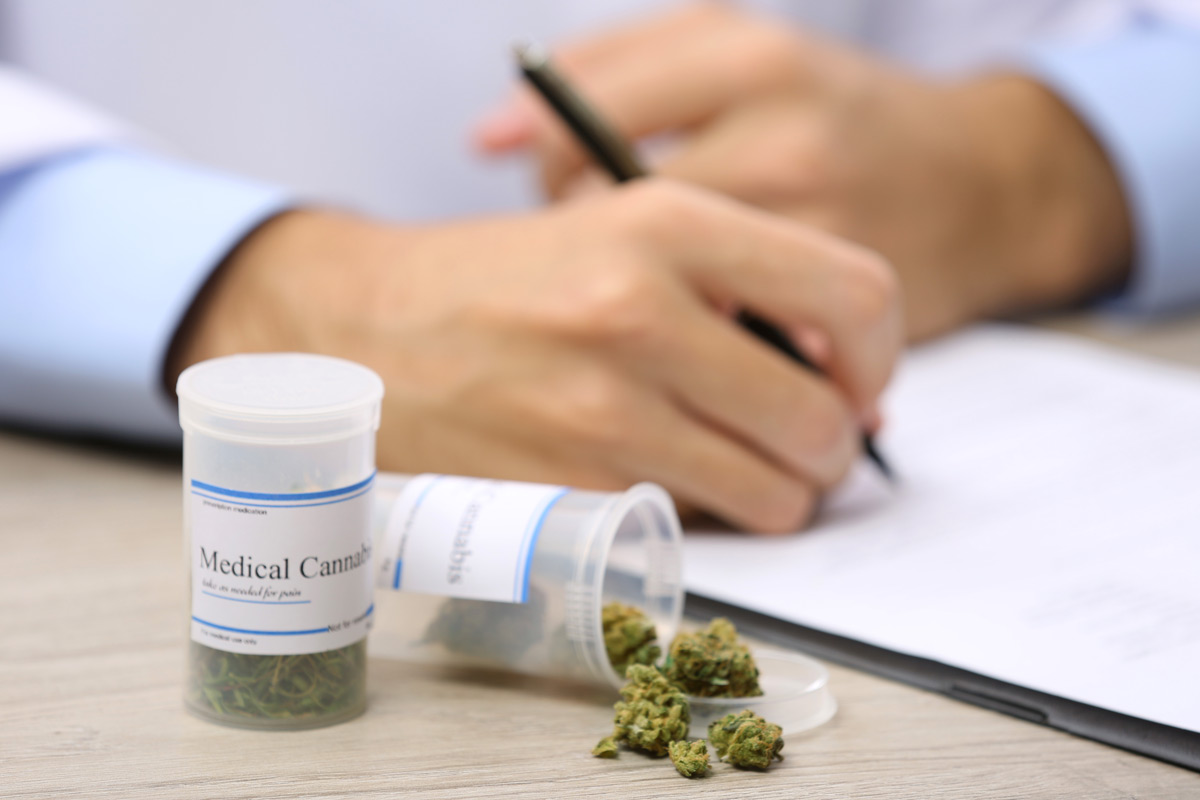The United States has seen a dramatic shift in the legal status of medical marijuana in recent years. With more states approving the use of cannabis for medical purposes and even more states actively considering similar legislation, it is an important and timely topic to examine in further detail. In this post, we will discuss the legal status of medical marijuana in the United States and explore how it has changed over the years. We will also consider some of the implications of this shift and how it affects the medical industry, public policy, and citizens across the country. Finally, we will look at what the future may hold for the legal status of marijuana in the United States.
Overview of Medical Marijuana Laws in the US
The United States has seen a dramatic shift in the legal status of medical marijuana in recent years. It is now legal for medical use in 33 states, with 15 more states actively considering similar legislation. This shift in public opinion has been accompanied by a change in the way health care providers, lawmakers, and citizens view the potential benefits and risks of cannabis use for medical purposes.
The medical marijuana laws in the United States vary from state to state, with some states allowing only certain conditions to be treated with cannabis while others still prohibit it altogether. As such, the legal status of medical marijuana is constantly evolving. For instance, many states have set up special medical programs, allowing qualified patients to access cannabis with a doctor’s recommendation.
The medical industry has responded to the changing legal landscape by allowing doctors to prescribe medical marijuana to their patients. This has resulted in an increase in the number of medical professionals researching and exploring the potential benefits of cannabis use for medical purposes. Additionally, public policy makers have responded by introducing new laws and regulations that are designed to protect the welfare of the public while also allowing those who need it to access the medical benefits of marijuana.
Overall, the legal status of marijuana in the United States is constantly changing and evolving. As more states consider legislation to legalize medical marijuana and more research is conducted to explore the potential benefits and risks of its use, medical marijuana is likely to become even more accessible in the future.
Federal Government’s Stance on Medical Marijuana
The United States federal government has been historically opposed to the use of medical marijuana, maintaining that cannabis has no medical value and is an illegal drug. Despite the fact that 33 states and the District of Columbia have legalized the use of medical marijuana, the federal government still considers it a Schedule I controlled substance and does not recognize it as a legitimate medical treatment. This stance has been maintained since the passage of the Controlled Substances Act of 1970 which classified marijuana as a Schedule I substance.
Despite the federal government’s stance on medical marijuana, there has been a growing acceptance among state governments and within the medical community. Several states have approved the use of marijuana for a variety of conditions, including chronic pain, glaucoma, and certain forms of epilepsy. Additionally, the FDA has approved two medications that contain cannabis-derived ingredients and the American Medical Association has called for further research on the potential benefits of medical marijuana.
Given the changing attitudes in both the public and private sectors, it is likely that the federal government’s stance on medical marijuana will continue to evolve. However, it is important to remember that until the federal government changes its policy on cannabis, it remains illegal under federal law. Therefore, it is important for states to take steps to ensure that medical marijuana is dispensed, cultivated, and consumed safely by qualified patients in accordance with their state laws.
State-by-State Legal Status of Medical Marijuana
The United States has seen a dramatic shift in the legal status of medical marijuana in recent years. With more states legalizing the use of cannabis for medical reasons and even more states actively considering similar legislation, it is an important and timely topic to examine in further detail. Currently, 33 states have legalized medical marijuana for qualified patients, with a variety of restrictions and regulations that vary from state to state. A further 15 states have decriminalized marijuana possession, allowing individuals to purchase and possess it without fear of legal repercussions.
The legalization of medical marijuana is of great significance to the medical industry. It allows doctors to prescribe cannabis as a treatment for a variety of serious medical conditions, ranging from chronic pain to severe seizures. Furthermore, it has opened the door to more research into the potential therapeutic benefits of the drug and its various components, such as cannabinoids and terpenes. This allows medical professionals to better understand how cannabis can be used as an effective treatment for various illnesses and diseases.
The legalization of medical marijuana has also had an effect on public policy. For instance, the U.S. Department of Justice has changed its approach to cannabis and issued guidance to federal prosecutors to focus their resources on more serious crimes. This shift has allowed state and local governments to create their own regulatory frameworks for the medical marijuana industry, resulting in a more consistent regulatory environment.
In short, the legal status of medical marijuana in the United States has changed drastically over the past few years. It has allowed for greater access to the drug for qualified patients and provided a platform for more research into its potential therapeutic benefits. It has also had an effect on public policy, resulting in more consistent regulations across the states. Ultimately, these changes have opened the door to a more expansive and inclusive approach to medical marijuana in the United States.
Federal vs State Medical Marijuana Laws
The legal status of medical marijuana in the United States varies significantly from state to state. Currently, 33 states and the District of Columbia have passed laws legalizing access to medical marijuana with varying degrees of regulation and restrictions. In these states, doctors can prescribe medical marijuana for a variety of medical conditions, such as cancer, chronic pain, HIV/AIDS, seizures, and Post-Traumatic Stress Disorder. Additionally, some states include provisions for recreational use.
However, this is where federal law comes into play. Under federal law, marijuana is still a Schedule I drug, meaning it is deemed to have a high potential for abuse and no accepted medical use. As a result, states are unable to regulate it and must rely on the federal government to do so. This means that even where medical marijuana is legal at the state level, it is still illegal under federal law and can still lead to criminal charges. Furthermore, it also means that medical marijuana users may not have the same access to medical care or financial assistance as those who use other medications.
The disparity between federal and state law has created a complex legal landscape for medical marijuana users and providers. It is important to consider how the changing legal status of medical marijuana affects the medical industry, public policy, and citizens across the country. It is also critical to understand how to navigate the legal landscape if you want to gain access to medical marijuana or become a provider.
Challenges and Opportunities of Medical Marijuana Legalization
The legalization of medical marijuana in the United States has been met with both challenges and opportunities. On the one hand, this shift in policy has enabled more individuals to access cannabis for medical reasons and has created a legitimate market for medical marijuana products. On the other hand, the lack of regulation has also caused a significant increase in marijuana-related crime and has led to conflicts between local and federal laws.
In terms of challenges, the most significant one is the lack of a uniform regulatory framework for the medical marijuana industry. This has made it difficult for states to enforce laws, collect taxes, and ensure the safety of consumers. It has also caused confusion among medical practitioners, who are unsure how to advise patients regarding medical marijuana. Additionally, some states have imposed restrictions on the types of medical marijuana products that can be purchased, which could limit its availability to those who need it most.
At the same time, the legalization of medical marijuana also presents a number of opportunities. For example, the industry has created thousands of jobs and generated millions of dollars in tax revenue. Furthermore, it has provided an extra layer of protection to patients with serious medical conditions, who can now access the drug without having to worry about legal repercussions. As the industry continues to evolve, these opportunities could become even more pronounced.
Overall, the legalization of medical marijuana in the United States has created both challenges and opportunities. While the lack of a unified regulatory framework has hindered the industry in some ways, the opportunities presented by the market have been substantial. As the legal landscape continues to change, it will be important for states to develop a comprehensive and uniform approach to regulating the medical marijuana industry.
Potential Benefits of Medical Marijuana
Medical marijuana has been gaining traction in the United States for many years. As attitudes towards the drug have shifted and its medical benefits have come to the forefront, the legal status of medical marijuana has also changed significantly. Currently, medical marijuana is legal in 33 states, with 17 states having legalized it both medically and recreationally.
The potential benefits of medical marijuana are vast. In terms of medical uses, cannabis has been shown to be effective in treating a variety of conditions, including but not limited to chronic pain, nausea, glaucoma, epilepsy, multiple sclerosis, and even cancer. Furthermore, legislation allowing for medical marijuana has had positive impacts on the economy and job market, creating new jobs and economic opportunities in the cannabis industry.
From a public policy perspective, medical marijuana has been a major step in the right direction. It has allowed for the safe and legal use of a drug that has the potential to treat a range of medical conditions, while also reducing criminal activity associated with the sale and use of illegal drugs. Furthermore, it has opened the door for further research into the potential medical benefits of cannabis, leading to better understanding of its therapeutic benefits.
Potential Risks of Medical Marijuana
Despite the increasing number of states legalizing the use of medical marijuana, there are still important potential risks associated with its use. In particular, there is a lack of comprehensive research and regulation surrounding cannabis, which can lead to uncertainty and potential dangers. For example, the exact dosage and quality of medical marijuana on the market can vary greatly. Also, the psychoactive effects of marijuana can be unpredictable and can potentially lead to negative psychological and behavioral outcomes. Furthermore, there is a risk of addiction and physical and psychological dependence with the use of medical marijuana. Additionally, side effects such as anxiety and impaired coordination can occur with the use of medical marijuana, which can be especially dangerous when driving.
The changing legal status of medical marijuana in the United States also has certain implications for public policy. As with any drug, legal or otherwise, the potential for abuse and misuse is always present and could lead to a variety of negative outcomes. It is important that policy makers take a proactive approach in order to ensure that medical marijuana is regulated and used in a safe and responsible manner. Furthermore, medical marijuana use could potentially have a significant impact on the healthcare industry, in terms of costs, coverage, and access.
Finally, the changing legal status of medical marijuana also has implications for citizens across the United States. It is important that individuals remain informed and aware of the potential risks and benefits associated with the use of medical marijuana. Furthermore, it is important to understand local and state regulations surrounding the use of cannabis, as they can vary significantly. By taking a responsible and well-informed approach to the use of medical marijuana, individuals can help ensure that they are making the best decision for their health and well-being.
How to Get Access to Medical Marijuana
In the United States, medical marijuana is currently legal in 33 states, the District of Columbia, Guam, and Puerto Rico. The states that have legalized medicinal cannabis either require a doctor’s recommendation or have passed laws allowing individuals to access medical marijuana with a valid medical condition. The type of medical cannabis available varies by state, with some providing more options than others. For example, some states have legalized only the consumption of cannabis in liquid form while others permit the use of both smokable marijuana flower and concentrates.
In order to legally obtain access to medical marijuana, an individual must be recommended by a physician who has a valid medical marijuana license. This license is obtained through the state where the individual resides and typically requires the completion of an application and the payment of applicable fees. Once the application is approved, the individual may then visit a medical marijuana dispensary to purchase the medical marijuana products needed. Depending on the state, medical marijuana products may be purchased with cash, debit or credit card, or a medical marijuana card. Additionally, some states require the patient to be registered with the state’s medical marijuana program in order to receive their medicine.
In conclusion, the legal status of medical marijuana in the United States has changed substantially in recent years, with more states legalizing the use of cannabis for medical uses. In order to legally obtain medical marijuana, an individual must be recommended by a physician who has a valid medical marijuana license and should also be registered with the state’s program if required. Finally, the individual must visit a medical marijuana dispensary to purchase the desired products with cash, debit or credit card, or a medical marijuana card.
The Future of Medical Marijuana
The legalization of medical marijuana has been a contentious issue in the United States for many years. In 1996, California became the first state in the nation to pass a law allowing for the use of cannabis for medical reasons. Since that time, 33 other states have followed suit and passed their own medical marijuana laws, with many more in the process of considering similar legislation.
The current legal status of medical marijuana in the United States is an ever-evolving landscape that is subject to the whims of state legislatures and changing public opinion. For example, some states have passed laws allowing the sale of marijuana products for medical use, while others only permit the use of cannabis products for limited medical conditions. Furthermore, while the federal government has taken a hands-off approach to this issue, the Drug Enforcement Administration still considers marijuana a Schedule I controlled substance, meaning that it is illegal to possess, distribute, or sell cannabis products at the national level.
The future of medical marijuana in the United States is uncertain, but one thing seems certain: the public support for medical marijuana is growing. As more states pass laws allowing for the use of cannabis for medical reasons, the pressure will mount on the federal government to address the issue. This could ultimately lead to a shift in the legal status of medical marijuana and pave the way for a more comprehensive legal framework that would provide greater protection for medical cannabis users.


